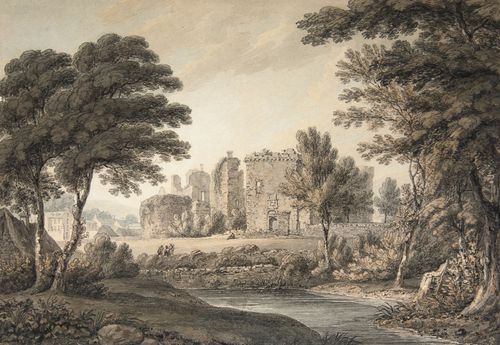Annotation:Rothesay Castle
X:1 T:Rothesay Castle M:C L:1/16 R:Strathspey B:John Gow – A Favorite Collection of Slow Airs, B:Strathspeys and Reels (London, c. 1804, p. 12) Z:AK/Fiddler’s Companion K:D (AB/c/)|dD3D3F E3DB,(c3|d)D3D3F A2(ag) f3d|g3af3g e3def3|dA3B3d A2F2F2AB/c/| dD3D3F ~E3DB,(~c3|d)D3D3F A3Bd3e|f3de3B d3FEF3|D3EDA,3 B,2D2D2|| f2|d3ef3d ~g3fea3|f3da3d b3da3d|~g3a~f3g ~e3de3f|d3BA3F (Ad3d3)f| d3ef3d ~g3fea3|f2ed a3d b3da3d|g2ga f2fg e3(gf3e)|d3BA3F D2(d2d2)||

ROTHESAY CASTLE. Scottish, Strathspey (whole time). D Major. Standard tuning (fiddle). AB. Rothesay Castle [1] is a ruined castle in Rothesay, the principal town on the Isle of Bute, in western Scotland, built by the Stewart family in the early 13th century. The original castle consisted of a massive circular curtain wall to which four towers were soon added, all encircled by a moat. It defended (sometimes unsuccessfully) against Norwegian invaders, and was at one time a favorite residence of Scottish kings. The castle has been a ruin for several centuries, but restoration work was undertaken at various times since the 19th century, and it is now maintained by Historic Scotland.

